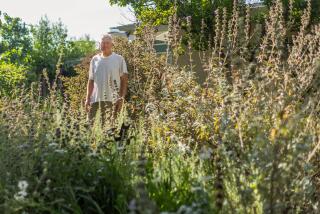Mark Abramson, towering figure who helped shape L.A.-area environment, dies at 56
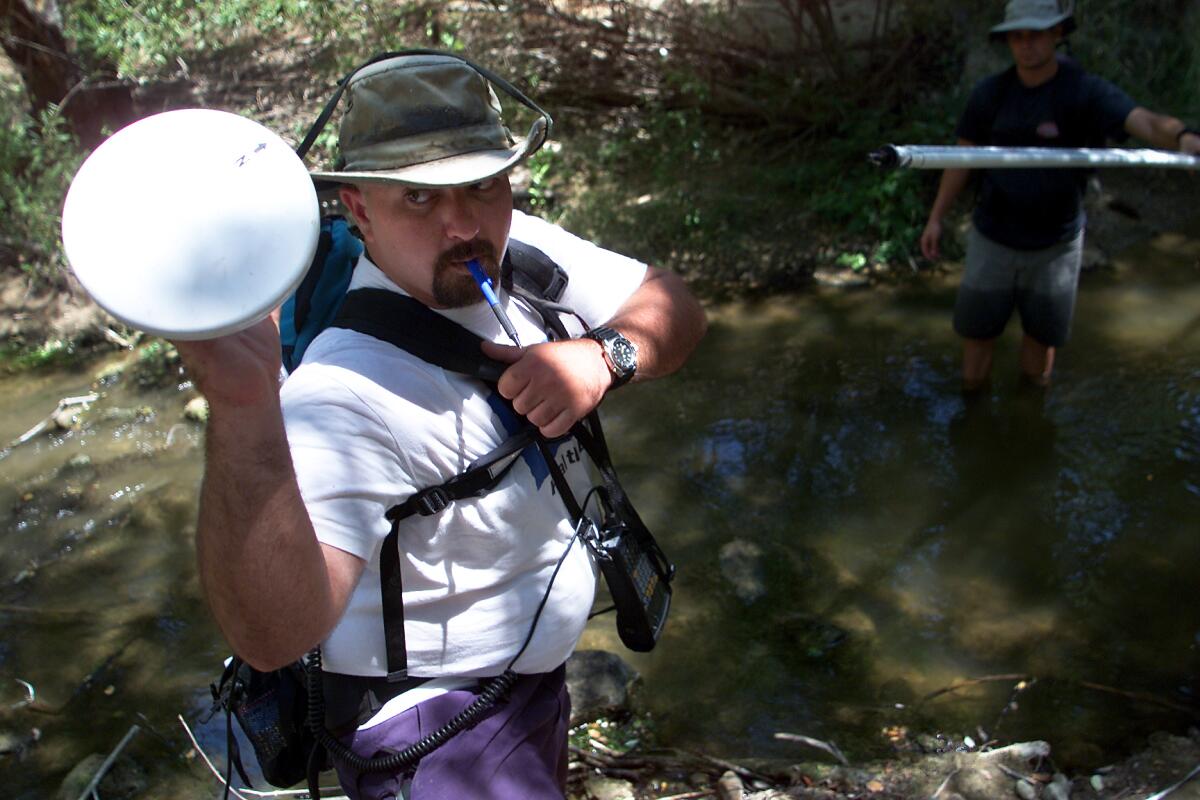
- Share via
When Mark Abramson was a young intern at the environmental nonprofit Heal the Bay in the mid-1990s, he was given the notably boring assignment of reviewing annual stormwater permit reports for all 88 cities in Los Angeles County and tracking their compliance.
He went about the task with characteristic gusto, and was so fascinated and fired up by what he found that he “didn’t leave for another dozen years,” laughed Mark Gold, who, as Heal the Bay’s former president, had assigned the chore.
Abramson went on to become a towering figure in the world of Los Angeles water — someone who would leave a lasting mark on its beaches, streams, wetlands and preserves, and whose legacy will be enjoyed by Angelenos for decades to come. Abramson died suddenly on Sept. 15 of a suspected heart attack, friends and family say. He had just turned 56.
A gruff, burly, colorful character with a booming voice and an undeniable presence (a 2001 Los Angeles Times profile described him as “Mr. Clean with a goatee and an attitude”), Abramson was instrumental in the cleanup and preservation of the Malibu Creek watershed, a 110-square-mile area that runs from the southeast edge of Ventura County to Malibu Lagoon, discharging at Surfrider Beach.
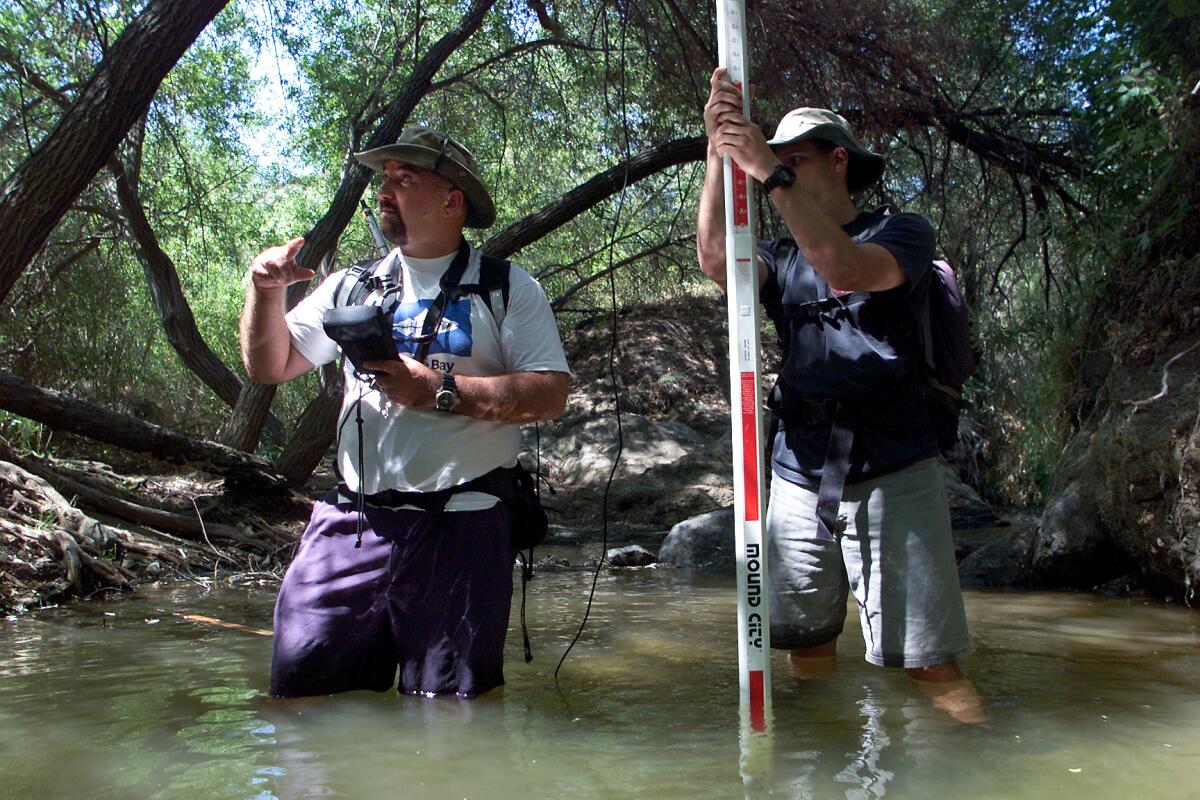
He also blew the whistle on polluters, secured the future of Ahmanson Ranch, removed fish barriers in Ballona Creek and Leo Carrillo State Park, and helped shape stormwater policies and clean water standards — all while wrangling volunteers and mentoring scores of young people. In 2014, Abramson received the Environmental Law Institute’s National Wetlands Award for his conservation and restoration efforts in Los Angeles County.
“The best environmentalists are people who take insults to the environment personally, and that was Mark,” Gold said. “Here’s a guy who grew up in Agoura Hills and knew every inch of the Malibu Creek watershed, and he protected it like it was one of his own children.”
Mark Abramson and his fellow ‘stream walkers’ are adamant in their efforts to clean up the watershed above Surfrider Beach.
Indeed, not long after Abramson came to Heal the Bay, he set out to map and monitor the entire watershed. He founded a volunteer group known as the Stream Team, which patrolled the entire area on foot and collected invaluable data about its water quality and biodiversity.
His work was instrumental in restoring Malibu Lagoon, one of the last coastal wetlands in the county, which was suffering from low oxygen levels, poor water quality and tainted sediment linked to urban runoff and discharges from the nearby Tapia sewage treatment plant. The effort also helped clean up Surfrider Beach, which for years had been one of L.A.’s most polluted beaches due to surges from the lagoon.
Aggressive and impactful reporting on climate change, the environment, health and science.
“What he did at Malibu Lagoon — I mean, that just shows you his perseverance,” Gold said. “Because he was a stubborn S.O.B., and thank God for the watershed that he was.”
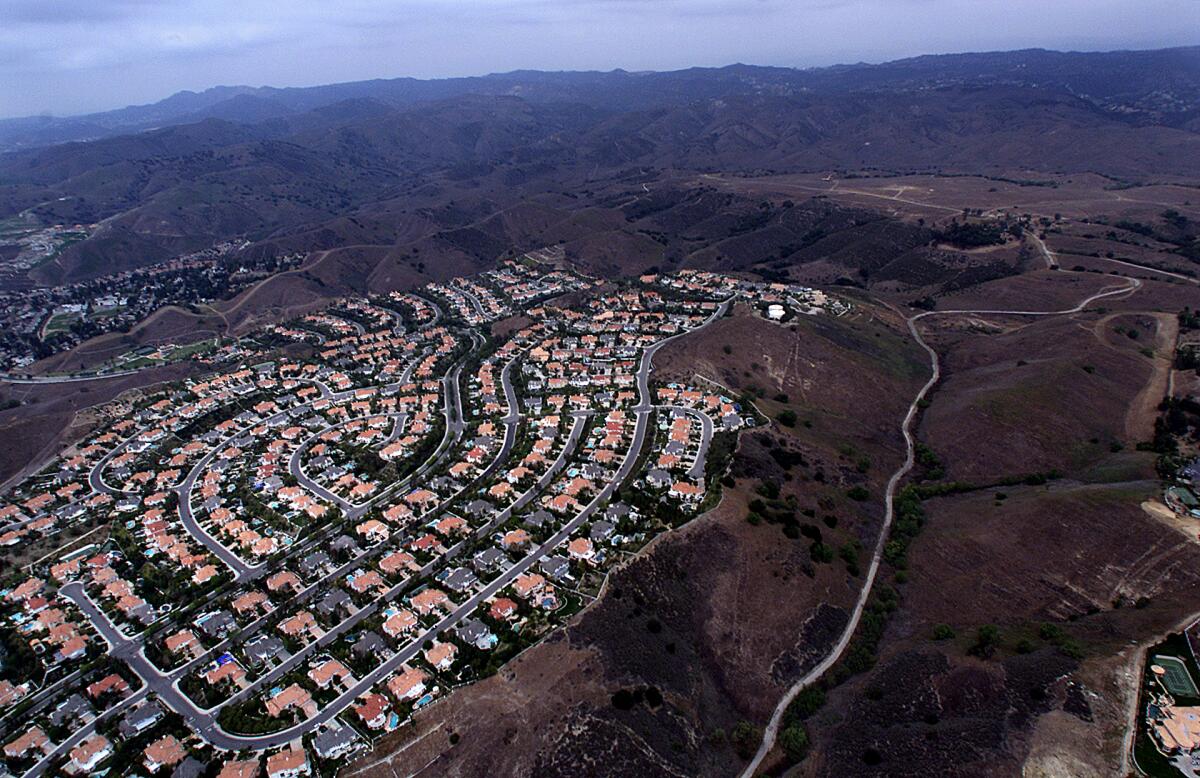
In the early 2000s, Abramson helped halt a controversial proposal to develop Ahmanson Ranch, a 3,000-acre property at Malibu Creek’s headwaters, into a private community with two golf courses.
Abramson mapped the area and found it to be a rare and critical habitat for red-legged frogs and other endangered species. Its owner at the time, Washington Mutual Bank, sold the expanse to the Mountains Recreation and Conservation Authority for $150 million, preserving it as a parkland and ending a tense 17-year battle.
“He was so smart and hardworking and determined, and he was visionary because he chose projects that were really hard to do, and he did them well to show us all what was possible,” said Shelley Luce, an independent water quality consultant who previously held roles at Heal the Bay, the Sierra Club and the California Coastal Commission.
The state Friday closed its deal to purchase the 2,983-acre Ahmanson Ranch, formally ending a 17-year battle by conservationists to keep the rolling, oak-studded property from being developed.
Luce said Abramson collected critical data on benthic macroinvertebrates — tiny creatures that live on the bottom of the creek — that aided in developing regulations for discharges from the sewage treatment plant and improving stormwater management practices in the region.
Abramson also gathered a group of volunteers to remove old dams from Ballona Creek, which were acting as barriers to endangered steelhead trout and other fish. Stone by stone, the team dismantled the dams and restored the banks, immediately improving the health of the stream, Luce said.
He then went a step further, working with the Parks Department to remove three car crossings that were blocking streamflow inside the Arroyo Sequit, located just north of Malibu at the base of Leo Carrillo State Park. He secured a large grant, hired an engineer and designed bridges to replace the crossings, creating a free-flowing creek and re-vegetating the site.
“Those were really big, and they just wouldn’t have happened if Mark hadn’t decided that this was important,” Luce said.
Make no mistake, however: Abramson was not your typical tree-hugger. He loved to hunt and fish, telling The Times in 2001 that he wanted to “catch a steelhead in the creek before I die.”
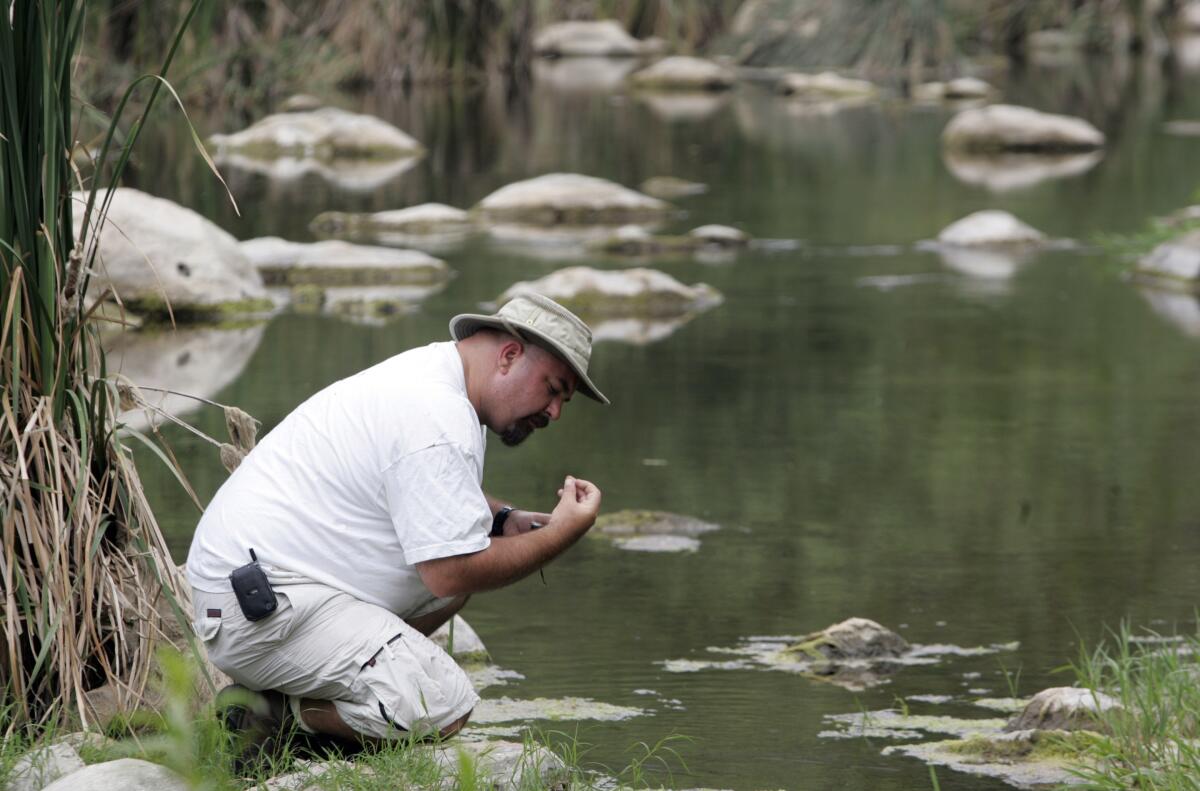
“Mark was, without a question, one of the sweetest, most generous men I ever met, and at the same time, his exterior was like 120-grit sandpaper,” said Tom Ford, chief executive of the Bay Foundation. “He kind of dared you to love him.”
He was so passionate about his work that he once scheduled a meeting about marine restoration on Christmas, Ford said.
Later, while working with Ford at the Los Angeles Waterkeeper, Abramson set out to better identify and understand sources of pollution entering waterways in the county. When rain was in the forecast, he would gather a team to head out and collect runoff samples, even if it meant waiting for a good soaking at 3 a.m.
The samples he collected helped identify polluters by tracing bacteria, metals and industrial materials directly to their source, Ford said, and “really moved the needle” toward improved regulatory processes for water quality and stormwater capture in the county.
Malibu: As development closes in on watershed, volunteers try to pinpoint sources of pollution.
But while many will remember Abramson for “the expanses of the landscapes he helped conserve,” Ford said, what often gets overlooked is his role as a mentor.
“He must have directly supported hundreds of young professionals in their careers — aiding them in their academic research, or [answering] professional questions as to where this all fit into context in the community of coastal Los Angeles,” he said. “He was stellar at it.”
His family said that sounded like the Mark they knew.
“In one way, he could be really gruff and hard-assed, but if you made that connection with him, it was forever,” said his brother, Jeff Abramson. “You talk to his friends, to all the people that worked with him even 30 years ago, and they all say the same thing. They loved his sense of humor, and just loved him.”
His niece, Alicia Abramson, 23, recalled asking her uncle for help with her fifth-grade science project when she was 10 years old.
In typical fashion, “he dragged me into one of those creeks and we were hunting for mudsnails for hours,” she recalled. “But we won the science fair.”
Born in Santa Monica and raised in Agoura, Abramson studied accounting at Pepperdine University and received a master’s degree in landscape architecture from Cal Poly Pomona. He later served as director of watershed programs at the Santa Monica Baykeeper and worked with the Santa Monica Bay Restoration Foundation, among other roles.
A few years ago, he founded Urban Ecoscapes, an environmental landscape company, and was actively involved in efforts to build a wildlife crossing for mountain lions and other animals over the 101 Freeway in Agoura Hills.
“He wanted what was there when he was a kid to be there for the next generation and the generation after that,” said Margot Carlson, his wife of 27 years.
When his years-long Malibu Lagoon restoration project was finally complete, he set up an underwater camera to see what would happen, Carlson recalled. The first day, the footage caught only a single tiny shrimp.
But just one week later, “there were schools of fish, crab everywhere, and tons of little shrimpies,” she said — signs of a healthy ecosphere.
“There’s nowhere you can really go in this area without seeing his imprint,” Carlson said. “There’s no beach you can go to, there’s no place in these mountains that he hasn’t touched.”
Abramson is survived by his wife, Margot; his brother, Jeff; his niece and nephews, Alicia, Max and Erik; cousin Kevin Brown and aunt Kate Brown.



